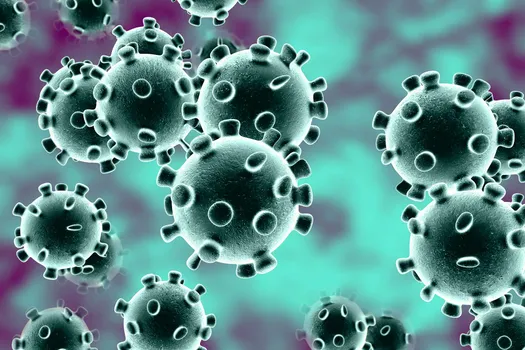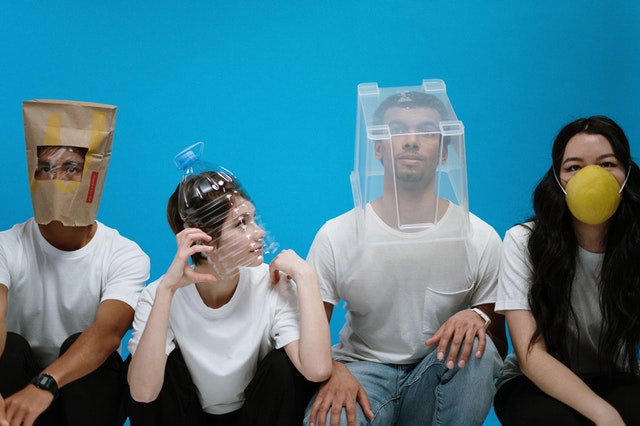
What is the latest news?
Boston Public Schools Return to All-Remote Learning
Oct. 21, 8:10 p.m.
Boston Public Schools announced Wednesday that all students will return to all-remote learning on Thursday because the coronavirus test positivity rate has risen for two straight weeks.
The system had opened the school year Sept. 21 with all-remote learning, but allowed special needs children and others who needed in-person education to return to the classroom Oct. 1.
“I am heartbroken that today we have to close our doors to our highest need students,” Schools Superintendent Dr. Brenda Cassellius said in a news release. “Our families are desperate for these services for their children, many of whom are non-verbal and unable to use technology in the home.
“We will work with the Boston Teachers Union and remain committed to providing in-person learning opportunities to our students as we are able, as we continue to prioritize our students with the highest needs for in-person learning.”
Boston.com reported that most students in the system have been receiving remote education.
Students given the priority for in-person learning included children who were homeless, in the care of the Department of Children and Families, in special education public day schools, in English language learner programs and with disabilities. Those students were scheduled to start in-person education four days a week on Thursday, Boston.com reported.
“We have said all along that we will only provide in-person learning for students if the data and public health guidance supports it, and this new data shows that we are trending in the wrong direction,” Mayor Martin J. Walsh said. “We will continue to monitor the metrics and work towards our goal of welcoming students back into our classrooms, learning among their peers, supported and educated by our dedicated staff.”
Boston’s seven-day average test positivity rate has recently gone from 45% to 5.7%, the release said.
When the city’s seven-day rate hits 5% or less for two consecutive weeks, students with the highest need can return, the school system said.
When the rate is 4% or lower for two weeks, Boston Public Schools will restart “the phased return of students for in-person learning, beginning with our youngest students,” the news release said.
Boston Public Schools has more than 54,000 students in 125 schools.
Volunteer in Brazilian COVID Vaccine Trial Dies
Oct. 21, 5:50 p.m.
A coronavirus vaccine clinical trial in Brazil will continue despite the death of a volunteer in the research.
Brazil’s National Health Surveillance Agency said the patient was involved the clinical trial for a vaccine developed by Oxford University and produced by AstraZeneca, according to the Washington Post.
That Brazilian agency did not say whether the person had received the vaccine or a placebo. A Brazilian newspaper, O Globo, cited unnamed sources in reporting that the volunteer received a placebo and died of coronavirus, the Post said.
An AstraZeneca spokesman, Brendan McEvoy, said the clinical trials will continue.
“We can confirm that all required review processes have been followed,” McEvoy said. “All significant medical events are carefully assessed by trial investigators, an independent safety monitoring committee and the regulatory authorities. These assessments have not led to any concerns about continuation of the ongoing study.”
Oxford University also said the trials would continue.
“The independent review in addition to the Brazilian regulator have recommended that the trial should continue,” Oxford spokesperson Alexander Buxton said, according to CNBC.
The coronavirus has ravaged Brazil. The nation has reported 7.6 million confirmed coronavirus cases and almost 155,000 deaths related to the virus — second most in the world behind the United States.
AstraZeneca’s clinical trials in Brazil, the United States and other nations were halted about a month ago because of an illness suffered by a participant in the United Kingdom. The trials in Brazil and the UK had resumed but those in the United States have not.
COVID-19 Death Rates Dropped, 2 Studies Say
Oct. 21, 3:38 p.m.
Deaths have fallen among hospitalized COVID-19 patients this year, which could indicate that doctors have a better understanding of how to treat the disease and that coronavirus mitigation strategies are working.
The decline happened across all patient groups, including older adults and people with underlying conditions, according to two peer-reviewed studies that will soon be published in the Journal of Hospital Medicine and Critical Care Medicine.
At the same time, the death rate is “still higher than many infectious diseases, including the flu,” she said. “It still has the potential to be very harmful in terms of long-term consequences for many people.”
Horwitz and colleagues looked at death rates among 5,000 hospitalized patients at NYU Langone Health from March to August. They found that mortality dropped 18 percentage points during that time. Patients had more than a 25% chance of dying at the beginning of the pandemic, which has decreased to about 7%.
The research team calculated for factors such as age and other diseases to determine whether the drop in deaths was related to the trend of younger, healthier people being diagnosed with COVID-19 later in the pandemic. They found that death rates have declined for all groups. An early version of the research appeared as a preprint in August and will be published next week.
In another study conducted in England, similar declines in death rates were observed among 21,000 hospitalizations between March and June. Mortality dropped by about 20 percentage points, including different ages, racial groups and underlying conditions. An early version of the research also appeared as a preprint in August and will be published soon.
“Clearly, there’s been something [that’s] gone on that’s improved the risk of individuals who go into these settings with COVID-19,” Bilal Mateen, one of the study authors and a data scientist at the Alan Turing Institute in the UK, told NPR.
Across the country, doctors and other health care professionals are noticing the signs of severe COVID-19 sooner and have developed standard treatments to help patients with blood clots and immune issues, NPR reported.
COVID-19 safety measures — such as social distancing and face masks — have likely also decreased the viral load that people encounter, which can reduce the severity of the disease, Horwitz and Mateen told NPR. Now researchers and public health officials are watching the surge in COVID-19 cases to understand coronavirus-related death rates for this fall and winter.
“I do think this is good news,” Horwitz said about the research. “But it does not make the coronavirus a benign illness.”
Missouri Family Reports 8 COVID-19 Cases, 3 Deaths
Oct. 21, 2:32 p.m.
A family that lives near St. Louis has lost three family members due to COVID-19 this year, and five more have been sick, according to NBC News.
Erin Griffin, 40, who lives in Florissant, MO, told NBC that her 72-year-old great uncle, Cornelius Brooks, died from the coronavirus in April while in a nursing home. A month later, her 67-year-old mother, Venita Griffin, and her 74-year-old great uncle, Kenneth Dortch, also died from COVID-19.
“My mother’s birthday is on Nov. 4, and it’s just so hard for all of us,” she told KSDK, an NBC affiliate. “My biggest fear in my entire life was losing my mother.”
Since then, she and four other family members have been sick, including her 14-year-old son, her partner, her sister and her 82-year-old grandmother. They’ve now recovered.
“The biggest thing I would tell people … is that this thing is real, and to please protect yourself in every way that you possibly can,” she said.
Griffin believes she became sick while taking care of her family members. Her 50-year-old sister, Lawanda Griffin, had severe COVID-19 and spent a month in a coma. After more than 3 months in the hospital, she still has pneumonia and indications of congestive heart failure.
“My sister actually was in a coma at the time my mother passed, so she had to wake up to the news of my mother’s passing,” Griffin said.
As COVID-19 cases surge again in many states, Griffin urged caution, especially as colder months and the holiday season arrives.
“This thing is real,” she said. “Love your family, and don’t take your life for granted.”
SOURCES:
NBC News, “3 members of same Missouri family die of coronavirus, 5 more sickened.”
KSDK, “3 members of St. Louis family die from COVID-19, 5 others test positive.”
Mouthwash May Inactivate Human Coronaviruses, Study Says
Oct. 21, 10:28 a.m.
Mouthwash and other oral rinses could inactivate certain human coronaviruses, according to a new study published in the Journal of Medical Virology.
“While we wait for a vaccine to be developed, methods to reduce transmission are needed. The products we tested are readily available and often already part of people’s daily routines,” Craig Meyers, a microbiologist and immunologist at the Penn State College of Medicine, said in a statement.
Meyers and colleagues tested the products in a lab to see how the virus reacts in nasal and oral cavities, which are the main points of entry and transmission for coronaviruses. They timed the interactions at 30-second, 1-minute and 2-minute intervals and then counted how many cells remained alive after a few days to calculate how much virus was inactivated.
The mouthwashes and diluted baby shampoo were the most effective, and they inactivated more virus during longer time periods. A saline rinse — or neti pot — had no effect.
The research team concluded that oral antiseptics could reduce the viral load in the mouth after infection and may reduce the spread of the virus, backing up another study published in the Journal of Infectious Diseases in July that indicated oral rinses could inactivate the virus.
Notably, though, the researchers in the Penn State study tested a human coronavirus cell line known as HCoV-229e as a surrogate for SARS-CoV-2, the virus that causes COVID-19. The researchers can’t say for sure whether the products could inactivate this year’s novel coronavirus, but it could be helpful since the strains are genetically similar.
“People who test positive for COVID-19 and return home to quarantine may possibly transmit the virus to those they live with,” Meyers said. “Even if the use of these solutions could reduce transmission by 50%, it would have a major impact.”
Clinical trials could test whether these products can reduce the amount of virus that COVID-19 patients spread while talking, coughing or sneezing, he added. Additional studies could look at the specific ingredients in these products to determine what inactivates human coronaviruses.
How many cases of COVID-19 are in the United States?
There are more than 8.27 million cases in the U.S. of COVID-19, and more than 221,120 deaths. More than 3.29 million Americans have recovered from the disease, according to data compiled by Johns Hopkins University.
